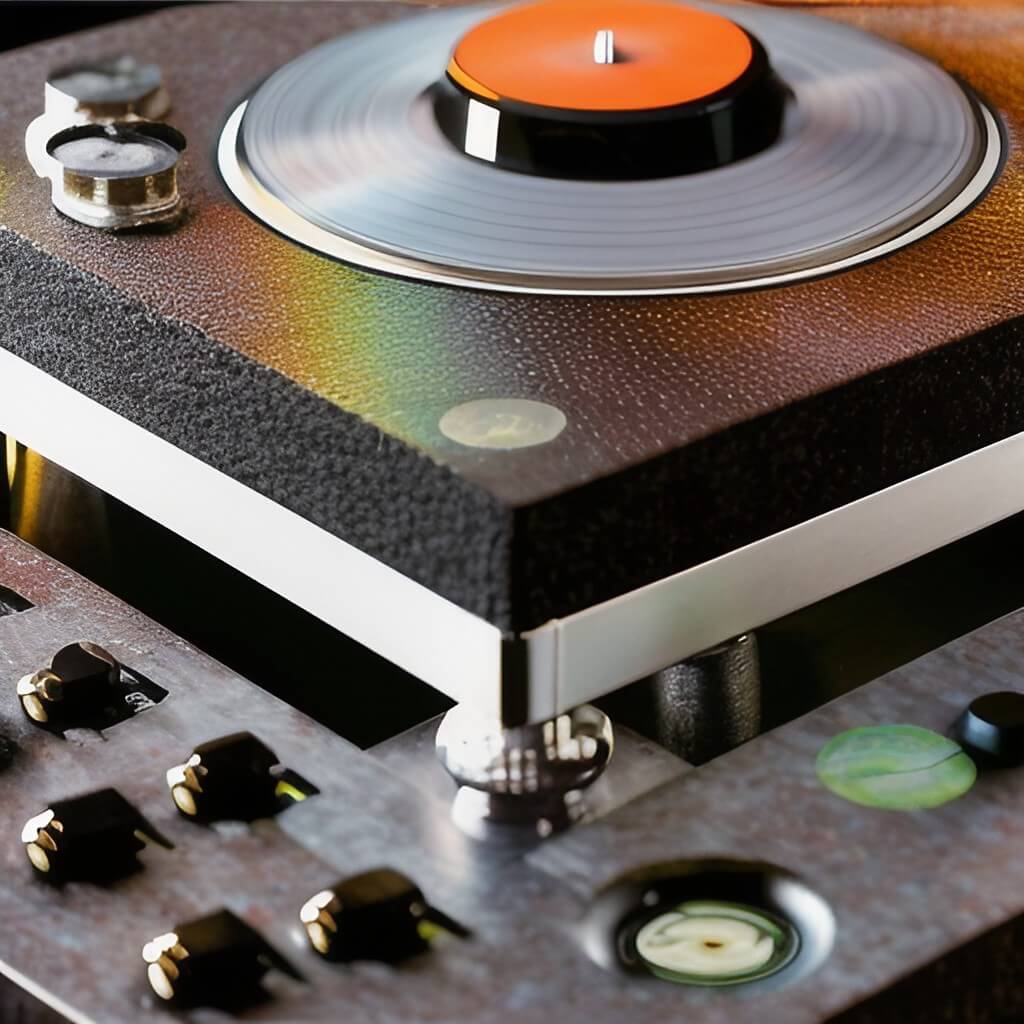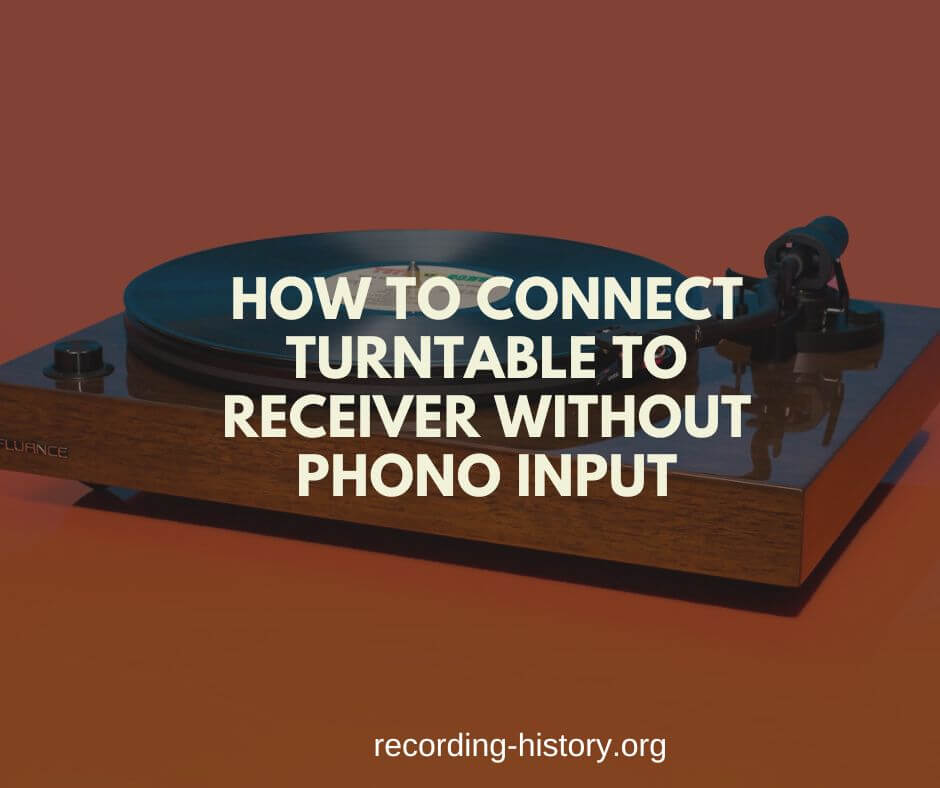How To Connect Turntable To Receiver Without Phono Input
Connecting a turntable to a receiver without phono input can sound intimidating, but it doesn’t have to be difficult. With the right components and understanding of the process, anyone can connect a turntable to a receiver without phono input.
This article will provide an overview of how this is accomplished as well as explain why it is important to understand the components and process involved.
Understanding Turntables and Receivers
A. Components of a Turntable
1. Platter
The platter is the main circular base of your turntable that holds the vinyl record while it spins. It also helps minimize vibration and sound distortion caused by the spinning record.
2. Tonearm
This arm suspends above the spinning vinyl, holding the cartridge and stylus. The tonearm is responsible for moving the needle gently across the record’s grooves as it plays music.
3. Cartridge
The cartridge is a small component that houses both an electrical generator and the stylus (needle). As the needle moves across the vinyl, it generates an electrical signal that can be amplified and sent to speakers.
4. Stylus
The stylus or needle is the small diamond tip at the end of the tonearm that rests on the grooves of a vinyl record. As it moves along, it vibrates and creates an electrical signal that needs to be amplified to play music.
B. Components of a Receiver
1. Amplifier
The amplifier is the main component of your receiver that increases the strength of an electrical signal and then sends it to speakers or headphones.
The amplifier in your receiver receives incoming signals and amplifies them so they can be heard through speakers or headphones.
2. Preamp
A preamp is a small device that helps condition the signal from your turntable before it reaches the amplifier. This can help reduce distortion, hum and noise from the sound source.
3. Input/Output Connections
Most receivers have both input and output connections for various audio sources, such as CD players, TVs or turntables.
The inputs connect to the device’s outputs, and the outputs connect to the amplifier so that sound can be heard through speakers or headphones.
Importance of Phono Preamps
Role of a phono preamp in a turntable setup
A phono preamp plays an important role in a turntable setup. This device is used to convert a phono level signal into a line level signal so that it can be amplified and heard through speakers or headphones.
Without a Preamp, the signal coming from your Turntable would not be powerful enough to be heard after being amplified by your receiver.
Another important role of a preamp is to equalize the RIAA curve, which stands for Recording Industry Association of America.
This curve is used to balance different frequency levels in order to achieve optimal sound quality. A phono preamp helps accomplish this by boosting certain frequencies while reducing others, resulting in better sound quality.

Factors to consider when choosing a phono preamp
When shopping for a phono preamp, there are certain factors that should be taken into consideration.
Firstly, it is important to make sure the preamp you choose is compatible with your turntable and receiver. This can involve checking the input/output connections, voltage requirements and other technical details.
Your budget is also an important factor to consider when shopping for a phono preamp. While there are some affordable models available, higher-end preamps tend to have more features and better sound quality.
In addition to the cost of the preamp, you should also consider the features and settings it offers. Some preamps may have adjustable gain or bass/treble controls, while others may feature a built-in noise reduction circuit to reduce hum and other distractions.
Finally, one of the most important factors when choosing a phono preamp is sound quality. While this can be difficult to determine without hearing the preamp in person, reading reviews and comparing features can help you make an informed decision.
Necessary Cables and Adapters
A. Types of Cables
1. RCA cables: These cables are used to connect audio sources, such as turntables, CD players or TVs to receivers or amplifiers. They usually have two plugs on each end – one red and one white – that connect to the corresponding inputs on your equipment.
2. Ground wire: This cable is used to eliminate any hum or buzzing noise that may occur in your audio system. It connects your turntable and amplifier together and acts as a common ground for both devices.
B. Adapters (if required)
1. RCA to 3.5mm adapter: This adapter is used to connect a 3.5mm (1/8 inch) audio source, such as a smartphone or portable music player, to an RCA input on your receiver or amplifier.
2. RCA to speaker wire adapter: This adapter is used to connect a pair of speakers to the output terminals on your receiver or amplifier. It has two RCA plugs on one end and two bare wires (positive and negative) on the other.
Connecting Your Turntable to Your Receiver
Step 1: Position your turntable and receiver
Before you start connecting your equipment, it is important to position the turntable and receiver close together.
This will make connecting all of the cables easier and ensure that the signal is being transferred properly. Make sure that both devices are on a level surface for optimal performance.
Step 2: Connect your turntable to phono preamp
Once you have positioned your turntable and receiver close together, it is time to connect the turntable to the phono preamp.
This step involves connecting one end of an RCA cable into the output terminals on the back of your turntable and the other end into the input terminals on the phono preamp.
Step 3: Connect phono preamp to receiver
Once you have connected your turntable to the phono preamp, it is time to connect the preamp to your receiver.
This step involves connecting one end of another RCA cable into the output terminals on the phono preamp and the other end into the input terminals on your receiver.
Step 4: Connect and secure the ground wire
In some cases, connecting a ground wire may be necessary to reduce hum and other interference.
This step requires connecting one end of a ground wire to the designated terminal on your turntable and the other end to the designated terminal on your receiver.
Step 5: Double-check connections and settings
Before you test your setup, it is important to double-check that all of the connections are secure and that all of the settings on both devices are correct. Make sure that both devices are powered off before making any adjustments.
Step 6: Test your setup
Once you have double-checked all of the connections and settings, it is time to test your setup. Power on both devices and play a record on your turntable.
If everything is connected properly, you should be able to hear the audio coming through your receiver and speakers.
If not, double-check the connections and settings again. If you continue to experience issues, consult your owner’s manual or contact a technician for help.
Troubleshooting Common Issues
Issue 1: Ground loops or hums
1. Potential causes
Ground loops occur when there is an unwanted connection between the ground wires of two different components in a system, usually caused by improper wiring or placement of cables. This can lead to hums and other interference issues that can disrupt your audio signal.
2. Solutions
a. Checking and adjusting grounding: Make sure that the ground wire is connected securely to both components, and make sure that it is not too close to other cables or audio equipment.
b. Using a ground loop isolator: If the hum persists, you may need to use a special device called a ground loop isolator to eliminate the interference.
c. Addressing cable placement and layout: Make sure that the cables are not running too close to each other or too close to other audio equipment, as this can cause crosstalk and interference.
Issue 2: Low or weak sound
1. Potential causes
Low or weak sound can be caused by a wide variety of factors, including faulty connections, incorrect settings on the phono preamp or cartridge, and issues with the stylus or record.
2. Solutions
a. Verify connections: Make sure that all cables are securely connected to both components and double-check that none of them have become loose or disconnected.
b. Check phono preamp settings: Make sure that the input setting on the phono preamp is set to “Phono” and that the output setting is set to “Line Out.”
c. Inspect cartridge and stylus: Make sure that the cartridge and stylus are securely attached to the tonearm, and make sure that the stylus is clean and undamaged.
Issue 3: Distortion or noise during playback
1. Potential causes
Distortion or noise during playback can be caused by a variety of factors, including dirty records and worn components on the turntable.
2. Solutions
a. Clean stylus and records: Make sure that the stylus is clean and free of dust or debris, and make sure that any records you are playing are cleaned thoroughly before use.
b. Adjust tracking force and anti-skate settings: Check the tracking force on your tonearm to make sure it is set correctly, and adjust the anti-skate setting as needed.
c. Replace worn components: If the noise persists, you may need to replace any worn or damaged parts on your turntable, such as the cartridge or stylus.
Related: How To Connect Your Victrola Record Player To Bluetooth Devices
FAQs
What is the difference between a phono input and a line-level input?
The difference between a phono input and a line-level input is that phono inputs are designed to receive the output from turntables, whereas line-level inputs are designed to receive the output from other audio devices such as CD players and cassette decks.
Can I connect my turntable to a receiver with an integrated phono stage?
Yes, you can connect your turntable to a receiver with an integrated phono stage as long as the receiver is designed to accept a phono connection.
Do I need a separate phono preamp if my turntable has a built-in preamp?
If your turntable has a built-in preamp, then you do not need a separate phono preamp.
How do I know if my turntable is compatible with my receiver?
To make sure that your turntable is compatible with your receiver, consult the user manual for both devices to determine the type of connection (RCA, mini-jack, etc.) required.
Can I connect my turntable directly to speakers without a receiver?
Yes, you can connect your turntable directly to speakers without a receiver, but it is recommended that you use an amplifier or preamplifier in between the turntable and speakers in order to properly adjust the volume, tone, and other settings.
Additionally, some speakers require a line-level signal while others may require a phono input. Check the user manual for your speakers to determine which type of connection is required.
Conclusion
In conclusion, setting up a turntable with a receiver without phono input requires some technical knowledge as well as patience and experimentation. However, with the right connections, settings and adjustments, it is possible to achieve excellent sound quality from your system.
We hope this guide has given you an insight into how to get started on connecting your turntable to your receiver and has provided you with some valuable information on turntable setup and maintenance.
We invite you to explore more resources on this topic, as well as experiment with different preamps and settings until you find the perfect sound for your system.
Good luck!







